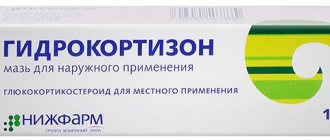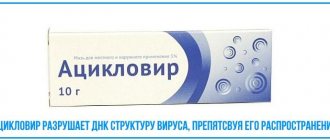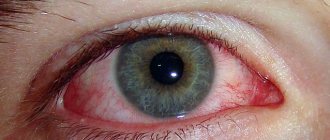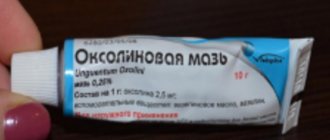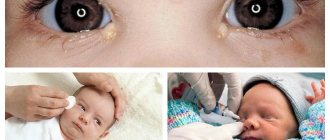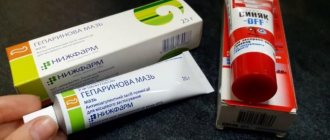Stye (medically called hordeolum) is an inflammatory disease of the eyelid. The cause of barley development is always an infection. Pathogenic bacteria settle in the cavity of the sebaceous glands or inside the eyelash bulb. The upper eyelid is more susceptible to such inflammation because it contains more eyelashes and sebaceous ducts. The disease is often unilateral, however, if stye is caused by general systemic disorders, the infection can affect both eyes at the same time.
Pathogenic bacteria enter the surface of the eyelid (as well as other parts of the eye, skin, mucous membranes) constantly from the external environment. However, this does not always lead to the development of inflammatory and infectious diseases. The onset of the disease itself is always determined by a complex of preconditions of external and internal origin. Predisposition to the development of styes is most often due to the following factors:
- neglect of eye hygiene rules;
- weakened immune system;
- avitaminosis;
- stress;
- hypothermia;
- hormonal imbalance;
- hereditary predisposition.
The constant or episodic effect of certain negative factors determines the severity of the disease, as well as the frequency and frequency of relapses. In many cases, barley reappears if the background conditions that create a favorable environment for pathogenic bacteria are not eliminated. During the process of treatment or natural opening of the stye, the latent focus of infection remains in the tissues of the eyelid in an inactive state and “wait” for suitable conditions to become active again. This indicates that the approach to treating hordeolum should be consistent and comprehensive. The prevailing opinion about the frivolity and safety of barley poses a serious threat. The source of infection in the eyelid area is dangerous because there is close proximity to the brain. The eye is part of the nervous system, through which the spread of infection can occur rapidly and with irreversible, severe consequences.
Course of the disease and the need for drug treatment
The everyday approach to treating barley can be twofold. On the one hand, there is a strong belief that this is not a disease at all and “will go away on its own.” If the inflammation is superficial and does not cause severe discomfort, in most cases the patient does not undergo treatment procedures. A favorable outcome in such a situation can be considered spontaneous opening of the inflammation site a few days after its occurrence. The natural release of purulent masses brings significant relief and, if complications do not develop, the eyelid heals quite quickly. At the same time, it is impossible to guarantee that after some time the barley will not “pop up” again. As already mentioned, some pathogenic bacteria remain in the tissues so that one day they begin to actively multiply again. Many patients are literally exhausted by a regularly inflamed eyelid at the slightest stressful situations or as a result of cold.
The second variant of the course of the disease requires mandatory treatment, since deeply located ulcers cause severe swelling of the eyelid, which can block the visual axis. Needless to say, a swollen eye causes pain, itching and is aesthetically unattractive. A large focus of inflammation can lead to general malaise, accompanied by increased body temperature, muscle aches, weakness, and headache. In such situations, patients are forced to seek qualified help.
No matter how the inflammatory process develops with barley, it is worth understanding that treatment is indicated in any case. Spontaneous recovery next time may “fail” and result in a more serious problem. Chronic recurrent infection carries the threat of sepsis and other life-threatening systemic diseases.
Pros and cons of using liniment
Positive properties include the ability to open suppuration, achieve a faster and more effective result, prevent relapses, powerful anti-inflammatory and antiseptic effects, and improve the healing process after opening the formation.
Negative factors include the presence of a strong and unpleasant odor, the possible appearance of irritation on the skin after prolonged use, and age restrictions.
The answer to the question of whether Vishnevsky ointment can be used for barley is positive. It is important to adhere to some requirements in this regard. It is advisable to prevent it from getting on the mucous membrane of the eyelid, as this can lead to irritation. In addition, in childhood, such procedures should be carried out under the strict guidance of a doctor.
INTERESTING fact: Echinacea and propolis tincture
Preparations for the treatment of barley
The primary occurrence of barley rarely forces the patient to seek medical help. It just so happens that spontaneous recovery is considered a natural option for the development of the disease. You can, of course, rely on your body’s own reserves. However, you need to understand that the likelihood of complications is many times higher if the disease is accompanied by the following clinical manifestations:
- increased body temperature;
- chills;
- headache;
- muscle and joint pain.
Also, a visit to the doctor is mandatory if styes “recur” again, if the illness lasts more than 7 days and when a swollen eyelid interferes with normal vision.
If, nevertheless, the patient relies on a favorable outcome of the disease without the help of medicine, it is worth following the simplest rules:
- refuse to use any cosmetics for the eyes, and better yet, for the entire face;
- do not touch or rub the sore eye;
- carefully rinse the eyelid with herbal decoctions (chamomile, calendula) or freshly brewed tea;
- during procedures, avoid transfer of infection to the second eye (use a new tampon or napkin for each eye).
Particular attention should be paid to the prevailing opinion about the need to warm up barley. Here you need to build on the rules that apply to any inflammation. Heating the source of infection at the stage of its development is contraindicated. Thermal procedures create the most favorable environment for bacteria to multiply and spread within tissues and with the flow of liquids. It is advisable to start warming up only at the stage of stabilization of the process, when the aggressiveness of bacteria is already suppressed by its own immunity, and it is necessary to help remove decay products.
If we still talk about the treatment of stye, then you should not assume that you will cause the ophthalmologist unnecessary anxiety by visiting him with such a “minor” problem. Inflammation of the eyelid will go away faster if special ophthalmic medications are provided to help your own immunity. In addition, an examination at the clinic will help identify hidden causes that give the infection a “green light”. The treatment regimen prescribed by the doctor takes into account all the factors that caused the disease. Therapy provides undeniable advantages over self-medication, as it provides sustainable results. A guaranteed favorable prognosis can only be said in the case of consistent, continuous and comprehensive treatment.
Advanced development of inflammation on the eyelid may even require surgical treatment. However, both outside and after surgery, medications in the treatment of barley are very effective and varied. The treatment regimen, as a rule, includes local agents that provide symptomatic relief and have an antibacterial effect. In addition, in the case of chronically recurrent styes, a general increase in immunity is highly desirable.
An important rule for the treatment of any infections also applies to the treatment of barley: antibiotics should not be used haphazardly and sporadically. Irregular instillation and application of such drugs in the form of ointments causes the infection to become “accustomed” to them. Pathogenic bacteria mutate, producing antibiotic-resistant strains in each new generation. The disease becomes chronic and in this form is much less treatable.
What is barley
An acute purulent inflammatory process of the hair follicle of the eyelash is barley. Sometimes hordeolum (another name for the disease) refers to inflammation of the Zeiss sebaceous gland, located near the eyelash bulb. Internal styes are characterized by inflammation of the meibomian gland lobules. Symptoms of the disease are swelling of the edge of the eyelid, redness, and soreness. Barley is caused by staphylococcal infection and cold. Its development is facilitated by reduced immunity, blepharitis, and conjunctivitis.
Eye drops for stye
The following drugs are effective as local drip antibiotics in the treatment of barley:
- albucid (sodium sulfacyl);
- chloramphenicol solution 0.25%;
- solution of penicillin or erythromycin 1%;
- gentamicin, ofloxacin, tobramycin, etc.
Antibacterial ophthalmic products may have different brand names: “Oftaquix”, “Tobrex”, “Floxal”, “Tsiprolet”, etc.
The choice of drug depends on the general condition. If you are allergic to certain antibiotics, drops from a different group are prescribed. During pregnancy, it is worth considering possible harm to the fetus (in this case, Tobrex is the safest).
Local instillation is performed 3-5 times a day. If there is general malaise with fever, antibiotics are also prescribed orally in tablet form (ofloxacin, amoxin).
Indications for the use of ointments for barley
Typically, antibiotic ointments are used in the treatment of barley. They are recommended for use when the following symptoms appear:
- The eyelid swells and hurts.
- Redness of the eyelid appears.
- The affected eye begins to water.
- The patient has a feeling of a foreign body in the eye.
As a rule, ointments are not used for treatment in the first days, since barley can go away on its own. If this does not happen, then you need to contact an ophthalmologist who will prescribe certain medications.
Antibacterial eye ointments
Unlike drops, ointments are not as convenient to use, since spreading over the surface of the eyeball, they interfere with normal vision for some time. It is recommended to place the ointment under the lower eyelid before going to bed. The absence of eye movements during sleep allows the drug to remain in the area of inflammation longer and have a prolonged effect. As a rule, ointments are prescribed in combination with drops: during the day - instillation, at night - applying ointment.
Effective and affordable ointments in the treatment of barley are the following:
- tetracycline;
- erythromycin;
- chloramphenicol;
Trade names include “Floxal”, “Tobrex”, “Fucitalmic” and others.
It should be borne in mind that some local drugs are always absorbed into the blood. The medicine is selected especially carefully if there is a history of allergies, as well as during pregnancy and breastfeeding. Just like tablets, topical antibiotics have a limited duration of use. Standard course – 5 days. Depending on the course of the disease, it can be changed, but is limited to a minimum of three and a maximum of ten days. If the treatment lasts more than a week, and there is no visible effect from the treatment, you should consult your doctor and change the antibiotic to a drug from a different group.
List of ointments for barley
The dosage form is used in complex therapy with drops for barley. The ointment is placed behind the lower eyelid. It is distributed evenly over the eye and is quickly absorbed. In the shortest possible time, the diseased organ receives the required dosage and quickly recovers. The success of treatment largely depends on whether the medicine is used correctly.
Table: “Varieties of eye ointments.”
| Drug group | Mechanism of action | Examples |
| Antibacterial eye ointment | Has a bactericidal or bacteriostatic effect. Suppresses the growth and division of pathogenic microorganism cells | Floxal, Tsipromed, Tetracycline |
| Antiviral ointment | It is integrated into the DNA synthesized by the virus and disrupts the reproduction of the microbe. Helps prevent the development of stye complications | Acyclovir, Zovirax |
| Glucocorticoids | Has anti-inflammatory, anti-allergic, anti-exudative properties | Hydrocortisone |
| Eyelid care product | Active components fight demodicosis, which can be the cause of stye | Blepharogel-2 |
| Combined products | They have anti-inflammatory, antiallergic, vasoconstrictor and antibacterial effects | Tobradex |
To treat eye inflammation, ophthalmologists use modern drugs with different mechanisms of action. The best ointments for stye on the eye of an adult are presented below.
Tetracycline ointment
A drug from the tetracycline group. The medicine contains the active ingredient - tetracycline hydrochloride. It has bacteriostatic activity and is effective against most gram-positive and gram-negative bacteria. When the active component enters a microbial cell, it disrupts the binding of tRNA to the ribosome and prevents further division.
Tetracycline ointment is available in tubes of 3 and 5 g. When barley develops, it is applied topically as indicated by an ophthalmologist and placed behind the lower eyelid several times a day. The medicine is used before bedtime. It accumulates in the tissues of the eyelids and conjunctival sac. This causes long-term destruction of pathogenic bacteria.
The ointment is distributed evenly over the eye. After application, a cloudy image may occur, which will subside over time. The average duration of therapy is 7 days. The cost of Tetracycline is 70-100 rubles.
Phloxal
Broad-spectrum antibacterial drug from the group of fluoroquinolones. Its active ingredient is ofloxacin. The drug has a bactericidal effect, which is associated with the blockade of the DNA gyrase enzyme in microbial cells. Floxal is indicated for patients with infectious and inflammatory diseases of the anterior part of the eye caused by gram-positive and gram-negative bacteria that are sensitive to ofloxacin.
When stye develops, the patient places 1.5 cm strips of ointment behind the lower eyelid of the affected eye 2-3 times a day. The duration of treatment is determined by the attending physician, but it is not advisable to apply the drug for more than 2 weeks.
After using the product, it is recommended to wear sunglasses and avoid prolonged exposure to sunlight and working with machinery.
Floxal may temporarily cause lacrimation and photophobia in the patient. The average cost of a medicine is 180 rubles.
Tsipromed
A broad-spectrum antibacterial agent belongs to the group of fluoroquinolones. It is used topically and applied to the affected eye. The main active ingredient, ciprofloxacin, affects gram-negative and gram-positive bacteria. The active component inhibits DNA gyrase of a pathogenic microorganism and disrupts the synthesis of its DNA. This makes it impossible for the bacteria to divide and grow.
When hordeolum develops, the drug is applied to the affected eye 3 times a day. The course of treatment is determined by the attending physician depending on the severity of the inflammatory process. However, it is not recommended to use the medication for more than two weeks. The price of Tsipromed is 130 rubles.
Immediately after applying the ointment, the clarity of vision may decrease, and psychomotor reactions may slow down.
This is why it is recommended to limit activities that require increased attention. The drug is prohibited for use by persons with individual intolerance to the components, as well as pregnant and lactating women.
Tobrex
A broad-spectrum antibiotic is used in ophthalmology to treat infectious and inflammatory pathologies. It belongs to the group of aminoglycosides and contains the active substance - tobramycin. The drug exhibits bactericidal activity against gram-positive and gram-negative microbes, blocking protein production in pathogenic microbes and disrupting their cellular permeability.
For mild infectious processes, Tobrex should be applied with a 1 cm long strip into the conjunctival cavity 2-3 times a day. In case of multiple styes, the drug is applied behind the lower eyelid every 3-4 hours. Gradually, the frequency of use of the ointment is reduced as the inflammatory process subsides. The average cost of the drug is 150 rubles.
The medicine is prohibited for use in patients with individual intolerance to the components of Tobrex. It is also not recommended to apply the ointment during pregnancy and lactation.
Oftocipro
It is a broad-spectrum antimicrobial agent belonging to the group of fluoroquinolones. The active ingredient in the eye ointment is ciprofloxacin hydrochloride. The substance has bactericidal activity. Suppresses DNA gyrase, inhibiting the formation of bacterial DNA. This leads to the inability of the pathogenic microorganism cell to grow and divide.
The dosage regimen is individual. Oftocipro is placed into the conjunctival cavity 3-4 times a day. The duration of therapy is 7-10 days. During treatment, the patient should take a sufficient amount of water.
The price of the medicine in pharmacies is about 200 rubles. It should not be prescribed if you are breastfeeding, pregnant, or if you have hypersensitivity to ciprofloxacin and other fluoroquinolone drugs. During treatment, there may be a decrease in reactivity, especially if the patient drinks alcohol.
Tobradex
It is a combination drug. The medicine contains 2 components - tobramycin and dexamethasone. The first is a broad-spectrum antibiotic from the aminoglycoside group. The principle of its action against pathogenic microbes is to disrupt protein production, structure and permeability of the cytoplasmic membrane.
Dexamethasone is a glucocorticosteroid that has a pronounced anti-inflammatory, antiallergic and desensitizing effect. The substance suppresses inflammation, inhibits the release of inflammatory mediators and the migration of mast cells. It reduces vascular permeability and dilation. The combination of a glucocorticoid with an antibiotic reduces the risk of infection.
The drug is used topically. A strip of ointment 1.5 cm long is placed in the conjunctival sac 3-4 times a day.
As the severity of the clinical picture decreases, the frequency of use of the drug decreases. The average cost is 500 rubles. The duration of treatment is 7-10 days.
If Tobradex is used by the patient for more than 14 days, then it is necessary to monitor the condition of the cornea.
After using the product, image clarity may temporarily decrease. Until vision is restored, it is not advisable to drive vehicles or engage in activities that require increased attention.
Ofloxacin
The drug belongs to the antimicrobial agents of the fluoroquinolone group with a broad spectrum of action. It has a bactericidal effect: it acts on the bacterial enzyme DNA gyrase, which ensures supercoiling and stability of the DNA of a pathogenic microbe. As a result of destabilization, the death of DNA chains and bacterial cells occurs.
Used topically. Place a strip of ointment behind the lower eyelid of the affected eye 2-3 times a day. To do this, the patient pulls the lower eyelid down and lightly presses the tube. After the drug enters the conjunctival sac, the patient closes the eyelid and moves the eyeball to the sides to evenly distribute the ointment. The course of treatment is about 7 days.
Anti-inflammatory drops and ointments
These drugs include hydrocortisone eye ointment, which is prescribed to relieve severe inflammatory reaction (edema) and only by an ophthalmologist, because the drug is hormonal and has many contraindications and side effects.
Medicines in the form of drops often combine an antibiotic with an anti-inflammatory component, the drugs “Maxitrol”, “Sofradex”, “Tobradex” and others.
In conclusion, we note that the procedure for applying local agents to the source of inflammation requires strict adherence to antiseptic rules. Before instilling or applying the ointment, your hands must not only be washed with soap, but also, preferably, treated with an antiseptic solution. The same is done when moving from one eye to the other. New tampons and wipes are used for each eye to prevent the spread of infection.
Causes of stye on the eye
Stye on the eye can appear at any age, but is more often observed in women who use decorative cosmetics and in children.
The main reasons are the penetration of microorganisms due to violation of hygiene rules and the weakening of human immunity. Infection through household or airborne transmission is almost impossible.
Barley is provoked by:
- Infection of the eyelid or conjunctiva. Microorganisms enter with dirty water, unwashed hands, dirty towels, or if the rules for using contact persons or cosmetics are violated. The main cause is Staphylococcus aureus bacillus.
- Skin disease – demodicosis.
- Advanced course of blepharitis.
- Spread of chronic infection from the source through the systemic bloodstream.
- Lack of vitamins.
- Frequent hypothermia, stress, overwork, bad habits.
Frequent relapses occur in patients with concomitant chronic diseases: diabetes mellitus, anemia, gastrointestinal diseases, liver dysfunction and helminthic infestations.
An ophthalmologist will tell you how to treat stye on the eye.
